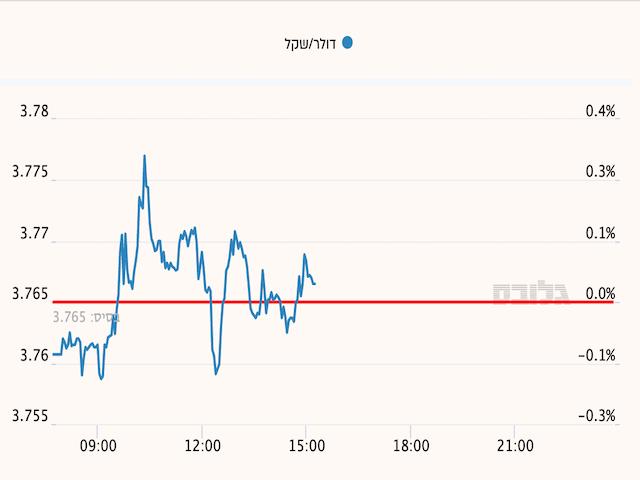Today, the Israeli shekel is experiencing a weakening trend against the US dollar, marking its lowest value since April. In afternoon inter-bank trading, the shekel rose by 0.37% against the dollar, reaching NIS 3.767/$, while it decreased marginally by 0.03% against the euro, settling at NIS 4.036/€.
Yesterday, the Bank of Israel set the representative shekel-dollar rate at NIS 3.753/$, a 0.16% decline from Friday. Meanwhile, the representative shekel-euro rate was adjusted to NIS 4.035/€, a 0.358% increase.
According to Globes, an Israeli business newspaper, Modi Shafrir, chief strategist at Bank Hapoalim, attributes the shekel's weakening against the dollar over the past month to both global and local factors. He explains, "The dollar's strength in global markets and the rise in the risk premium of the local economy have contributed to the shekel's depreciation. This is evident in the underperformance of the local stock exchange, increased yields in the local government bond market, higher Israel CDS premiums, and a widening spread between Israel's 10-year dollar bond yield and the corresponding US Treasury bond."
Shekel at weakest against dollar since April: Analysts attribute the shekel depreciation to the strength of the US dollar on world markets and the ongoing uncertainty in Israel. https://t.co/jleb7yMsqz Globes pic.twitter.com/yym4OZ38vM
— Jewish Community (@JComm_NewsFeeds) July 2, 2024
Ronen Menachem, chief markets economist at Mizrahi Tefahot Bank, concurs, stating, "The shekel's depreciation stems from both the global strengthening of the dollar and local economic weaknesses. This trend is reflected in declines in the stock and bond markets. Currently, the market is characterized by confusion and uncertainty across security, political, and economic spheres, with no clear signs of improvement or direction."
Menachem also highlights the impact of the renewed discourse on judicial reform on market sentiment. He notes, "Such discussions can affect market sentiment, making it difficult for investors to make decisions, thereby impacting the shekel negatively. Additionally, the upcoming interest rate announcement and new economic forecast from the Bank of Israel this Monday are putting the foreign exchange market in a standby mode."
Despite the shekel weakening by 1.4% against the dollar over the past month, Menachem points out that the euro has also weakened against the dollar by a similar rate of 1.2%, primarily due to political upheavals in Europe, especially in France. He emphasizes the need for caution in drawing conclusions based on short-term trends, stating, "It's important to remember that the shekel has reached levels of NIS 4.08/$ during past conflicts and that the Bank of Israel is closely monitoring the situation. Therefore, it's too early to detect panic or a worsening trend in the shekel's weakening. The shekel is highly reactive to both positive and negative developments, sometimes within the same trading day."
🌟 Weekly Forecast for Israel 🌟
— Topnet Global (@TopnetGlobal03) June 27, 2024
1️⃣ Euro & Dollar: The shekel is up against the dollar due to positive local trends but down against the euro following ECB policy changes. Expect currency swings! For example, export businesses may benefit from a stronger dollar.
2️⃣ Real…
In summary, while the shekel faces challenges against the dollar, the broader context of global and local factors suggests a complex and fluctuating economic landscape. Investors and market observers are advised to exercise caution and consider the broader economic indicators before making decisions.


